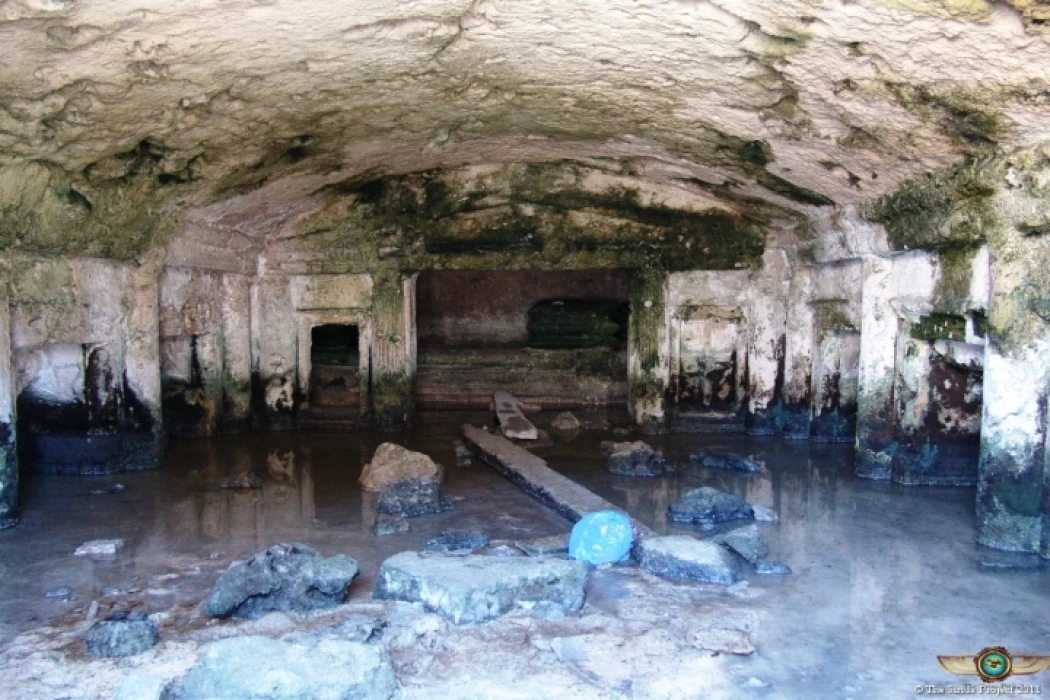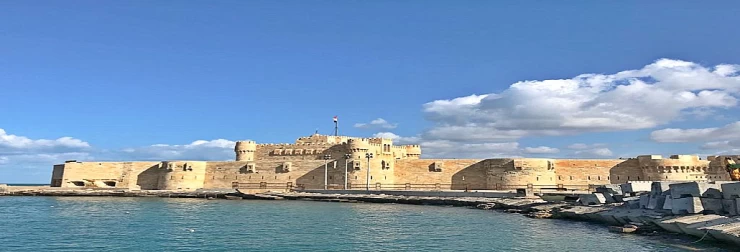
The Cemetery of Shatby
Tombs of shatby history
Alexandria is now regarded as a modern city because earthquakes in the past buried the ancient city's features and caused another city to be built on top of it until it reached its current size. As a result of construction and demolition, several archaeological sites were unintentionally found, including Al-Shatby Tombs, which are situated in front of Al-Shatby area directly behind the Bayram Al-Tunisi Theater. The Ministry of Antiquities worked to restore Al-Shatby Tombs, the most recent archaeological site to be found.
Three groups of tombs (A, B, and C) make up the funerary complex carved into the natural rock of the 3500 square meter Al-Shatby cemetery. The tombs (B and C) are small, abandoned tombs, some of which from ancient times were never used at all.
It consists of an open courtyard around which multiple burial chambers revolve, and the burial chambers include a variety of burials, including burials in holes carved into the wall, burials in family-shaped coffins, and burials of burned bodies whose bones are collected and placed in special pots for burned bones.
Al-Shatby Cemetery is the oldest existing cemetery in Alexandria dating back to the hellenistic age, and it also remains the oldest archaeological site within the city up to date. This of course coincides with the time of founding of the city of Alexandria after the coming of Alexander the Great and his ambitions of constructing a city there which was under the control and governance of Ptolemy I who was also prior to that a river.
When Ptolemy I ruled Egypt, he decided to make this city the capital of Egypt, and Alexandria was built at that time, and Alexandria lasted 1000 years as the capital of Egypt under the rule of the Ptolemies and the Romans after them, and this tomb is the first tomb to be carved to bury the first generation of Alexandrians, who died at the time of the city's construction.
Although a number of other tombs were built in this era, Shatibi remains one of the most important and most prestigious tombs in this era, explaining that a large part of Shatibi is located below the city from the old city, which was destroyed by the climate and earthquakes throughout history.
The tomb was suffering from groundwater and rainwater, which entered the burial chambers of the tomb and resulted in a two-meter-high layer of rubble, silt and waste, and the intervention was to completely clean the tomb and reach its archaeological floor, restore and maintain it and take measures to protect it for the future, which was the most important feature of the project where the completion of the tomb's disclosure was reached.
All parts of the tomb were restored, and the tomb and the mother rock buried in it were surrounded by protective walls, and the path of the visit and its directions were restored and utilized by establishing a multimedia visitor center to provide archaeological scientific information about the tomb, and the site was provided with a cafeteria, and all modern buildings on the site were developed and modernized with the addition of an entry room equipped with an “X Ray” device, a control room and a gift house.
The restoration resolution was rendered at the close of 2019, whilst fieldwork commenced on the 1st of August 2020, lasting a total of 18 months, during which time pre-intervention site documentation was created followed by comprehensive digital documentation after conclusion of all intervention works which included added protective works as well as new structure designs.
Latest Articles
Admin
Aswan Governerate in Egypt
One of Egypt's southern governorates is Aswan Governorate. The city of Aswan serves as its capital. At a latitude of 22 north of the equator (also known as the Tropic of Cancer), it is bounded to the north by the Qena Governorate, to the east by the Red Sea Governorate, to the west by the New Valley Governorate, and to the south by the Republic of Sudan.
Admin
Luxor Governorate Egypt
The capital of the Arab Republic of Egypt is Luxor City, which was once known as "Thebes City" because it served as Egypt's capital during the Pharaonic era. It is situated in the South Upper Egypt region, approximately 670 kilometers from the capital Cairo from the south. It is bordered on the north by Qena Governorate, on the south by Aswan Governorate, on the east by Red Sea Governorate, and on the west by New Valley Governorate.
Admin
History of kafr El Sheikh Governorate
Kafr El Sheikh Governorate is an Egyptian governorate, located in the northernmost part of Egypt in the Nile Delta, with Kafr El Sheikh as its capital. It had a population of 3,172,753 in 2015 and an area of 3,748 km². Its entire area is located north of the delta and overlooks the Mediterranean Sea. The main economic activity of the residents of the governorate is agriculture and fishing, especially the southern lands of the governorate and the lands overlooking the Nile River - Rosetta Branch.
Admin
Egypt's New Administrative Capital
The New Administrative Capital is located between the Cairo-Suez and Cairo-Ain Sokhna roads, 60 km from Cairo and the same distance from Ain Sokhna and Suez. The New Administrative Capital is located on the border of Badr City, in the area between the Cairo-Suez and Cairo-Ain Sokhna roads, just after New Cairo, Mostakbal City and Madinaty.
Admin
Al Gharbia Governorate
Gharbia Governorate is one of the governorates full of archaeological sites, whether they are places or facilities (mosques, churches), as the governorate is a destination for visitors to these places throughout the year, whether they are Egyptians from the different governorates.
Admin
Hamata Islands (Qulaan Archipelago) in Marsa Alam
The Hamata area, south of Marsa Alam in the Red Sea, is one of the most important parts of the Wadi El Gemal Reserve, whether in the desert or the sea. It was named after the sorrel plant, which was distorted to Hamata.














